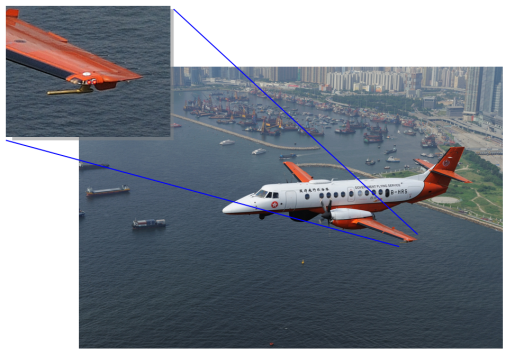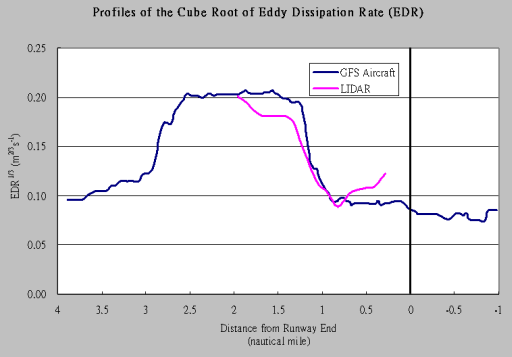GFS Turbulence Measurement
|
To further enhance the turbulence alerting service, the Observatory collaborated with the Government Flying Service (GFS) to collect high quality turbulence measurements in the vicinity of the HKIA. |
Figure 1 A GFS fixed wing aircraft with a data probe mounted on the wing tip collects meteorological data in the vicinity of the HKIA regularly |
Figure 2 EDR profiles from data collected by the GFS aircraft compared with those from the LIDAR |
|
|

